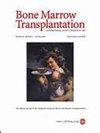An international survey to better understand the current incidence, severity, and management of VOD/SOS
IF 4.5
2区 医学
Q1 HEMATOLOGY
引用次数: 0
Abstract
This international questionnaire survey aimed to explore the current incidence, diagnostic policies, management, and outcomes of veno-occlusive disease/sinusoidal obstruction syndrome (VOD/SOS) among healthcare providers involved in the management of these patients. A questionnaire was e-mailed to practitioners with an interest in allogeneic hematopoietic cell transplantation (allo-HCT). Of the respondents, 144 of 215 (67.0%) felt that early detection or diagnosis of VOD/SOS was difficult. Regarding diagnostic criteria, 142 (66.1%) already declared using the 2023 EBMT refined criteria. Most respondents (163/215, 75.8%) found these recent refined EBMT criteria useful for diagnosis, and 193 (89.8%) found the severity criteria easy to use. The major risk factors identified for VOD/SOS were a second allo-HCT (41.4%), pre-existing liver disease (54.9%), and prior use of antibody-drug conjugates (49.8%). Preferences for starting VOD/SOS treatment varied, with 61 (28.4%) preferring initiating therapy at a mild stage, and 122 (56.7%) preferring the moderate stage. In summary, this survey provided valuable insight into the challenges and opportunities of the identification and management of VOD/SOS. By improving current knowledge and increasing collaboration among healthcare professionals, early detection, management, and clinical outcomes for patients with this potentially serious complication can also be improved.

为更好地了解 VOD/SOS 目前的发病率、严重程度和管理情况而进行的一项国际调查。
这项国际性问卷调查旨在了解参与治疗静脉闭塞性疾病/窦腔阻塞综合征(VOD/SOS)的医护人员目前的发病率、诊断政策、管理和治疗效果。我们通过电子邮件向对异体造血细胞移植(allo-HCT)感兴趣的从业人员发送了调查问卷。在 215 位受访者中,有 144 位(67.0%)认为 VOD/SOS 的早期发现或诊断比较困难。关于诊断标准,142 位受访者(66.1%)已宣布使用 2023 年 EBMT 改良标准。大多数受访者(163/215,75.8%)认为这些最新修订的 EBMT 标准有助于诊断,193 人(89.8%)认为严重程度标准易于使用。VOD/SOS的主要风险因素是第二次异体肝细胞移植(41.4%)、既往肝病(54.9%)和既往使用抗体药物共轭物(49.8%)。开始 VOD/SOS 治疗的偏好各不相同,61 人(28.4%)偏好在轻度阶段开始治疗,122 人(56.7%)偏好在中度阶段开始治疗。总之,这项调查为我们深入了解 VOD/SOS 的识别和管理所面临的挑战和机遇提供了宝贵的资料。通过提高现有知识水平和加强医护人员之间的合作,还可以改善这种潜在严重并发症患者的早期发现、管理和临床疗效。
本文章由计算机程序翻译,如有差异,请以英文原文为准。
求助全文
约1分钟内获得全文
求助全文
来源期刊

Bone Marrow Transplantation
医学-免疫学
CiteScore
8.40
自引率
8.30%
发文量
337
审稿时长
6 months
期刊介绍:
Bone Marrow Transplantation publishes high quality, peer reviewed original research that addresses all aspects of basic biology and clinical use of haemopoietic stem cell transplantation.
The broad scope of the journal thus encompasses topics such as stem cell biology, e.g., kinetics and cytokine control, transplantation immunology e.g., HLA and matching techniques, translational research, and clinical results of specific transplant protocols. Bone Marrow Transplantation publishes 24 issues a year.
 求助内容:
求助内容: 应助结果提醒方式:
应助结果提醒方式:


